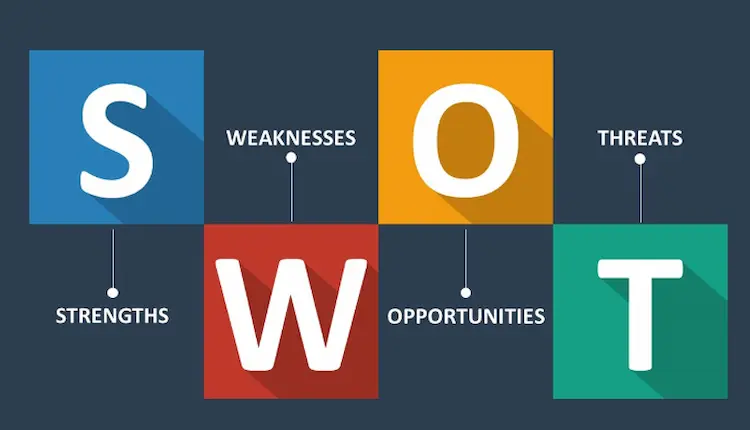In the dynamic business landscape, having a clear vision and well-defined goals is essential. However, it’s equally important to align those aspirations with a coherent strategy to achieve them. Building a bridge between your business goals and your strategy requires careful thought, analysis, and a touch of creative finesse.
In this guide, we’ll explore practical steps to help you synchronize your objectives with your approach, ensuring a harmonious path to success.

Clarify Your Business Goals
Before embarking on any strategic endeavor, it’s crucial to have a crystal-clear understanding of your business goals. Take a moment to reflect on your long-term vision and identify specific objectives that will propel you toward it.
Are you aiming for market expansion, customer acquisition, or product innovation? By defining your goals, you lay the foundation for a purposeful strategy. Once you’ve defined a clear strategy it is also essential to share this with everyone in the organization.
Team alignment software cascades your company’s goals to your employees. It also allows you to assign specific objectives to individual people, teams, and entire departments. This helps improve communication and build accountability across your organization. Everyone must understand the company’s goals and how they contribute to them for a successful business.
Conduct a SWOT Analysis
To formulate an effective strategy, you need to assess your business’s internal strengths and weaknesses, as well as the external opportunities and threats it faces.

Conduct a SWOT (Strengths, Weaknesses, Opportunities, and Threats) analysis to gain valuable insights into your organization’s current standing. This analysis will guide you in leveraging your strengths, addressing weaknesses, seizing opportunities, and mitigating potential risks.
Create a Value Proposition
Crafting a compelling value proposition is vital for aligning your goals with your strategy. A value proposition outlines the unique value your business offers to customers. It should be tailored to meet their needs while differentiating your brand from competitors. By creating a strong value proposition, you establish a foundation upon which your strategy can be built, driving your business forward.
Identify Key Performance Indicators (KPIs)
Key Performance Indicators (KPIs) are measurable metrics that reflect your progress toward achieving your business goals. Identifying relevant KPIs ensures you have a concrete way to gauge your strategy’s effectiveness. Whether it’s sales growth, customer retention, or operational efficiency, aligning your KPIs with your goals allows you to track and adjust your strategy accordingly.
Track and Monitor KPIs
Tracking KPIs allows you to monitor your progress, identify trends, and make data-driven decisions. Regularly analyzing these metrics helps you understand whether your strategy is aligning with your goals or if adjustments are needed. It’s important to establish a system for gathering and analyzing data consistently to ensure accurate and reliable measurements.
Moreover, setting specific targets or benchmarks for your KPIs provides you with milestones to strive for. These targets can serve as motivators for your team, creating a sense of purpose and focus on achieving the desired outcomes. Regularly reviewing and sharing KPI updates with your team fosters transparency and accountability, ensuring everyone remains aligned and invested in the overall strategy.

Evaluate Resource Allocation
Effective resource allocation is a crucial element of aligning your business goals with your strategy. Analyze your available resources, such as budget, manpower, and technology, to ensure they are aligned with your strategic objectives.
Distribute resources wisely to maximize their impact and avoid overextension. By aligning your resources strategically, you position your business for optimal growth and success.
Foster Cross-Functional Collaboration
Silos within organizations can hinder the alignment between goals and strategy. Encourage cross-functional collaboration to break down barriers and foster a unified approach. By bringing together teams from different departments, you create a collective synergy that enhances communication, cooperation, and the overall effectiveness of your strategy.
Embrace Agility and Flexibility
In today’s rapidly evolving business landscape, agility and flexibility are key to maintaining alignment between your goals and strategy. Recognize that your strategy may need adjustments along the way, and be open to embracing change. Regularly evaluate market trends, customer feedback, and the competitive landscape to make informed strategic decisions that keep your goals within reach.
Agile practices implement emerging technology to provide performance insights and adjust to the dynamic market. An excellent example is strategic initiative management software, which helps predict whether a company’s campaigns will finish on time and within budget. This allows businesses to cancel the strategies that aren’t performing as expected and focus their budget and effort on the ones that are.
Communicate and Cascade Objectives
Alignment can only be achieved when everyone in your organization understands and supports the overarching goals and strategy. Communicate your objectives to all stakeholders and cascade them down through the ranks. Engage your team, foster a sense of ownership, and provide regular updates to ensure everyone remains focused on the bigger picture.
Conclusion
Aligning your business goals with your strategy is an art that requires a delicate blend of clarity, analysis, and adaptability. By clarifying your goals, conducting a SWOT analysis, creating a compelling value proposition, identifying relevant KPIs, tracking and monitoring their performance, and allocating resources strategically, you establish a strong foundation for success.
Foster cross-functional collaboration, embrace agility, incorporate new technologies, and communicate the company’s goals effectively to ensure your entire organization is aligned and working harmoniously towards achieving them.
With this guide as your compass, you can confidently navigate the path to success and take your business to new heights.